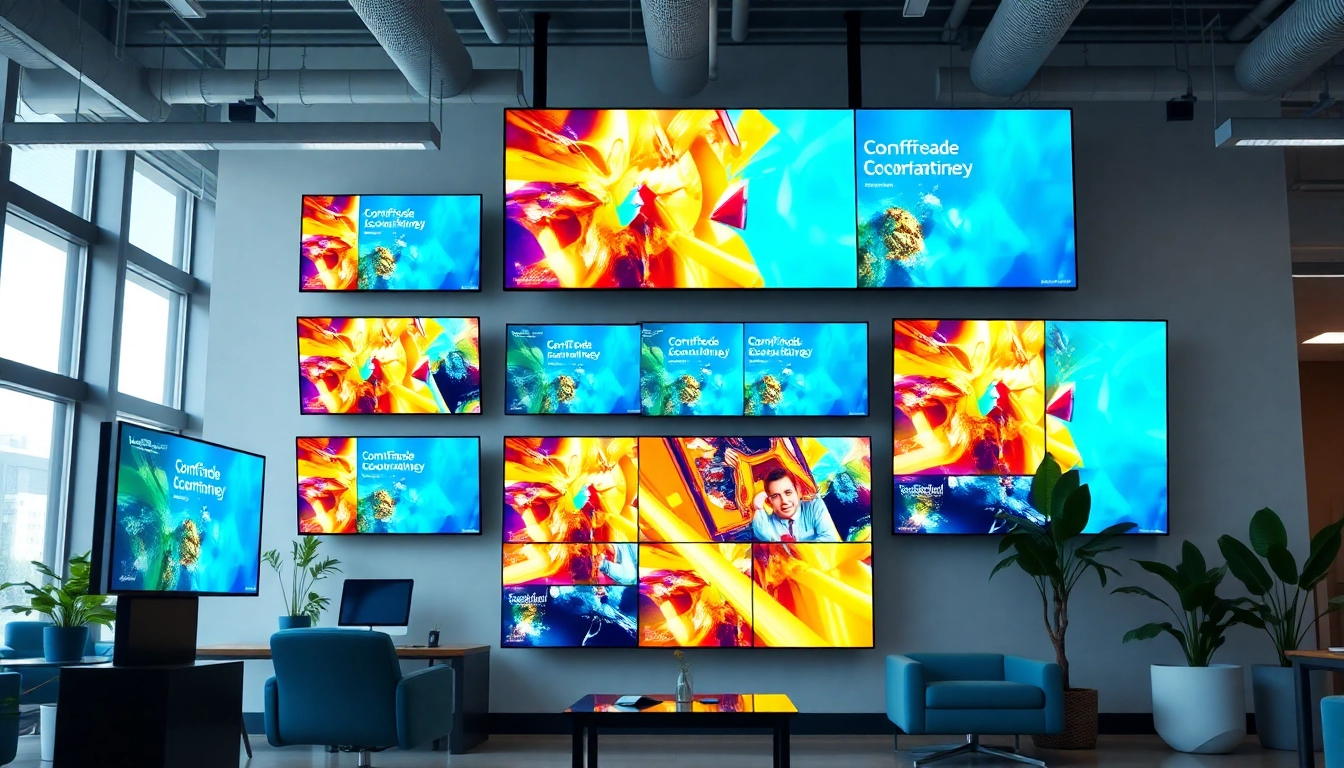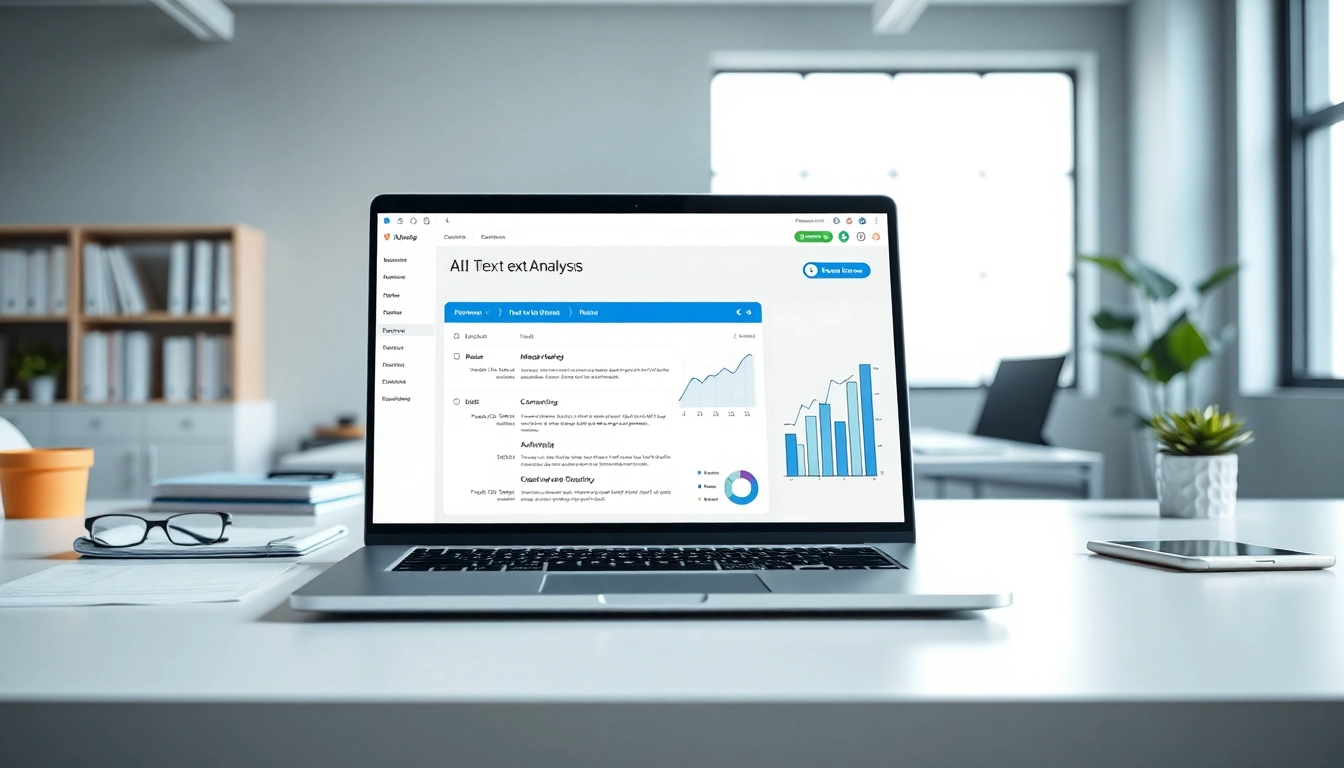Understanding Multi-screen Digital Signage Management
What is Multi-screen Digital Signage Management?
Multi-screen digital signage management refers to the coordinated control and content management of multiple digital displays used for informational and marketing purposes. This approach enables businesses to showcase dynamic content across various screens simultaneously, enhancing visibility and engagement. Organizations utilize this technology to effectively communicate messages, advertisements, or important information across different locations or within a venue. The essence of multi-screen digital signage management is not just about displaying content on individual screens, but orchestrating a cohesive experience that can capture audiences’ attention and deliver targeted messages seamlessly.
Key Components of Multi-screen Digital Signage Management
There are several vital components that make up effective multi-screen digital signage management systems:
- Content Management System (CMS): This is the backbone of any digital signage strategy, allowing users to create, schedule, and manage content across various screens. A robust CMS offers features such as drag-and-drop editing, media libraries, and real-time updates.
- Display Hardware: The choice of screens is crucial. Options include LED displays, LCDs, and projections, each with distinct characteristics suitable for different environments. Factors like size, resolution, and brightness must align with the usage context.
- Network Infrastructure: Depending on the scale of the deployment, a strong network connection (wired or wireless) is necessary for managing and delivering content effectively, especially in scenarios requiring real-time updates.
- Content Creation Tools: Creative tools like graphic design software or video editing programs are essential for producing engaging content that resonates with the target audience.
- Analytics and Monitoring: Tracking performance metrics, audience engagement, and content effectiveness helps fine-tune strategies and improve ROI through data-driven decisions.
The Importance of Multi-screen Digital Signage Management in Today’s Market
In a rapidly changing digital landscape, leveraging multi-screen digital signage management has become pivotal for businesses aiming to stay relevant and competitive. With consumers increasingly expecting personalized and interactive experiences, brands that harness this technology can significantly enhance customer interactions and brand retention. It allows businesses to allocate resources strategically, ensuring the right message reaches the right audience at the right time. Furthermore, in high-traffic areas, the potential reach and impact of well-executed multi-screen strategies can boost footfall and conversion rates, thereby contributing to overall business growth. Therefore, incorporating Multi-screen digital signage management into marketing efforts is no longer a luxury but a necessity.
Benefits of Multi-screen Digital Signage Management
Enhancing Customer Engagement through Multi-screen Digital Signage Management
One of the most notable benefits of using multi-screen digital signage management is the enhanced customer engagement it generates. By displaying compelling visuals, videos, and interactive content across multiple screen formats, businesses can draw in consumers and hold their attention longer. For example, a retail store might use synchronized displays to highlight special promotions, product features, and even customer testimonials. Integration of interactive elements, such as touchscreens that allow users to explore products, further facilitates engagement, fostering a more memorable customer experience.
Cost-Effectiveness of Multi-screen Digital Signage Management
Implementing multi-screen digital signage can lead to substantial cost savings over time. While the initial setup may require investment, the long-term benefits often outweigh the costs. Digital signage allows businesses to update content instantaneously, removing the need for physical print materials, which consume time and resources. Furthermore, using a centralized content management system reduces human error and operational inefficiencies. Ultimately, the ability to adapt campaigns in real-time means companies can respond promptly to market trends, significantly increasing return on investment.
Real-Time Updates and Flexibility in Multi-screen Digital Signage Management
Multi-screen digital signage management offers unparalleled flexibility, particularly in how messages are tailored and delivered. Businesses can execute campaigns in real-time, ensuring that displayed content is relevant and timely. For instance, during a sporting event, organizations can choose to show live scores or highlight key moments across multiple screens, thereby engaging fans and enhancing their experience. This ability to change content on-the-fly also allows for prompt updates in response to stock levels, special events, or shifts in consumer behavior, making digital signage a strategic asset in fast-paced environments.
Common Challenges in Multi-screen Digital Signage Management
Technical Issues in Multi-screen Digital Signage Management
Despite its advantages, managing multi-screen digital signage systems is not without challenges. Technical issues, particularly those related to software and hardware failures, can disrupt content delivery and diminish the effectiveness of campaigns. Connectivity problems can also lead to inconsistent displays, which can confuse audiences and undermine message clarity. To mitigate these risks, organizations should invest in reliable hardware and maintain comprehensive technical support. Regular software and system updates, along with rigorous testing protocols, are essential to ensure seamless operations.
User Experience Challenges in Multi-screen Digital Signage Management
User experience is critical in any digital marketing strategy, and multi-screen setups can present unique challenges. If not designed well, content may overwhelm or confuse viewers, leading to disengagement. For instance, excessive visuals or poorly synced messages can detract from the primary objective of informing or attracting customers. To combat such issues, it is essential to prioritize user-centric design principles such as clear messaging, brand consistency, and thoughtful spatial arrangement of screens, ensuring that the content effectively guides the viewer’s experience rather than detracting from it.
Content Management Difficulties in Multi-screen Digital Signage Management
Effective content management is one of the greatest hurdles in multi-screen digital signage management. Organizations often struggle to create dynamic, engaging content that suits various displays while remaining consistent across platforms. The challenge is magnified when coordinating updates across multiple screens and locations. Utilizing a powerful content management system (CMS) that enables batch updates and provides analytics tools can simplify the content management process. Additionally, developing a cohesive content strategy aligned with the overall marketing goals can streamline efforts and enhance effectiveness significantly.
Best Practices for Implementing Multi-screen Digital Signage Management
Designing Effective Content for Multi-screen Digital Signage Management
To maximize effectiveness, content for multi-screen digital signage should be strategically designed to capture attention and convey information clearly. Effective practices include:
- Using high-resolution images and videos that reflect the brand aesthetic.
- Keeping text minimal and legible, ensuring ease of reading from various distances.
- Incorporating dynamic content that entices viewers, like animations or video loops.
- Utilizing a consistent color scheme and branding style that aligns with the organization’s touchpoints.
- Segmenting content for different screens based on location or audience demographics to create a more personalized experience.
Choosing the Right Hardware for Multi-screen Digital Signage Management
The selection of hardware is critical in the deployment of multi-screen digital signage. Businesses must consider several factors, including:
- Screen Type: Determine which screen type (LCD, LED, OLED) best fits the environment and intended use.
- Size and Resolution: Choose screens with appropriate sizes and resolutions to ensure visibility and clarity from various distances.
- Brightness Levels: For outdoor settings, select displays with high brightness levels to combat sunlight and external light interference.
- Durability: Opt for screens that can withstand environmental factors, especially in high-traffic areas or outdoor applications.
Monitoring and Analytics for Multi-screen Digital Signage Management
Monitoring the performance of multi-screen digital signage initiatives is vital. Effective analytics help businesses understand viewer engagement, measure campaign success, and make data-driven decisions. Utilizing tools that provide insights into audience behavior, dwell times, and content effectiveness enables organizations to fine-tune their strategies. Regularly reviewing these metrics can inform future content choices and promotional activities, leading to continuous improvement and enhanced ROI.
Future Trends in Multi-screen Digital Signage Management
Emerging Technologies Impacting Multi-screen Digital Signage Management
The future of multi-screen digital signage management will be heavily influenced by emerging technologies. Innovations such as artificial intelligence, augmented reality, and the Internet of Things (IoT) will profoundly alter content delivery methods. AI can optimize content based on audience demographics and preferences, while IoT can enable interconnected screens that respond dynamically to real-time data inputs. Additionally, augmented reality can enhance engagement by allowing consumers to interact with digital content in a more immersive manner. Staying abreast of these trends will be essential for organizations looking to maintain a competitive edge in their digital marketing efforts.
Consumer Behavior Trends Shaping Multi-screen Digital Signage Management
Understanding shifts in consumer behavior is essential for effective multi-screen digital signage management. As audiences become more tech-savvy, their expectations for interactive and personalized experiences are rising. Marketers are increasingly utilizing data analytics to tailor content that resonates with specific audience segments. Social proof elements, such as user-generated content and testimonials, are also gaining traction as consumers seek validation from their peers. Therefore, staying informed on evolving consumer preferences is crucial for brands looking to engage audiences meaningfully through multi-screen signage.
The Role of Social Media in Multi-screen Digital Signage Management
Social media integration within multi-screen digital signage management is becoming increasingly prevalent. By showcasing live social media feeds, businesses can enhance interaction and foster community engagement. Real-time updates and user-generated content can create a more inclusive environment, drawing audiences into the brand narrative. Moreover, incorporating social media elements encourages audience participation, such as encouraging customers to share their experiences or use specific hashtags during events. By bridging the gap between physical and digital interactions, brands can amplify their marketing strategies, enhancing both visibility and customer loyalty.



